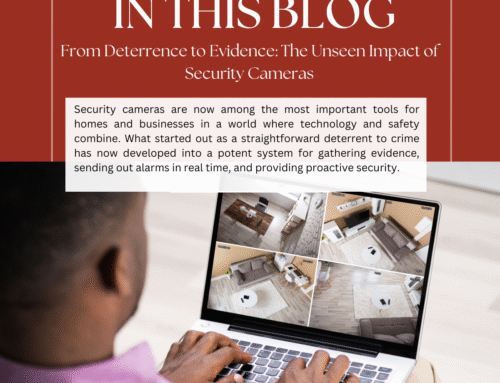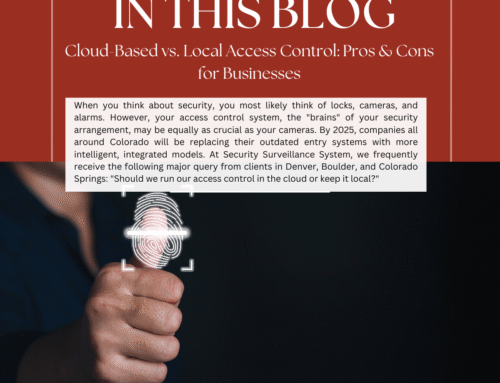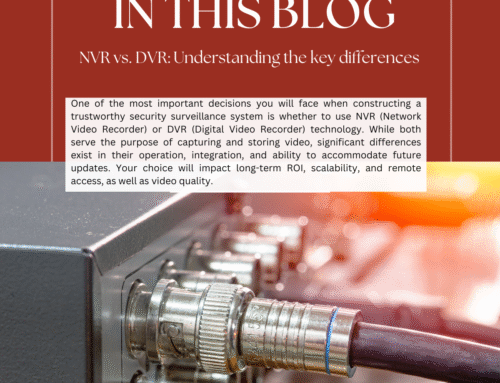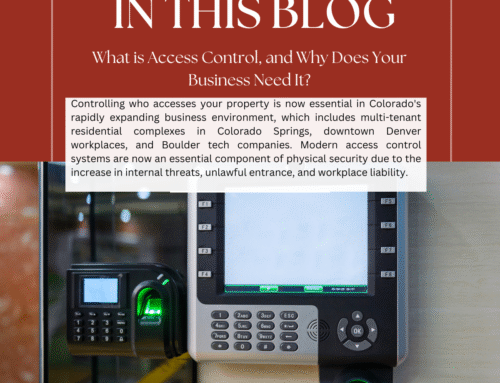Hybrid Cloud Intercom Systems Transforming Modern Communication
Hybrid Cloud Intercom Systems Transforming Modern Communication
In the past, intercoms served as little more than basic door buzzers, primarily used for simple communication and access control. However, they have evolved significantly and are now becoming an indispensable component of modern connected security systems. At the forefront of this transformation are hybrid cloud intercom systems, which are redefining how we think about communication and security.
Hybrid solutions seamlessly integrate the convenience, scalability, and advanced analytics of cloud technology with the reliability of on-premises hardware. By combining these two elements, hybrid cloud intercoms offer a versatile approach that enhances functionality while ensuring robust performance. This duality allows organizations to benefit from real-time data access and remote management capabilities without sacrificing the reliability of local systems.
These advanced hybrid cloud intercoms represent more than just a technological upgrade for various sectors, including businesses, property management firms, educational institutions, and healthcare facilities. They facilitate improved communication and collaboration among individuals, streamline processes across multiple locations, and enhance the coordination of security teams. As a result, they not only elevate the user experience but also play a crucial role in establishing safer and more efficient environments.
The significance of “hybrid cloud” for intercoms
While utilizing cloud infrastructure for longer-term storage, analytics, remote administration, and cross-site synchronization, a hybrid cloud intercom system saves and processes vital, time-sensitive data (voice streams, video snippets, access logs) locally. The split architecture resolves two traditional trade-offs:
- Reliability and resilience: Local devices offer ultra-low-latency audio/video for door unlocks or emergency paging, and they continue to function during internet disruptions.
- Scalability and access: Cloud services enable administrators to perform AI-based analytics, aggregate logs from several sites, push changes, and offer mobile access from any location.
In 2024–2025, the demand for distributed architectures that balance local control with cloud agility has been high. As the global hybrid cloud market continues to grow rapidly, this combined approach is very appealing.
Market indicators: expansion and acceptance
The intercom and hybrid-cloud industries are expanding concurrently, according to several market reports:
- The market for hybrid clouds as a whole is growing quickly, which is indicative of businesses’ inclination toward distributed architectures. According to recent industry studies, the hybrid cloud market is worth tens to hundreds of billions of dollars and is growing rapidly year after year.
- As properties modernize and integrate intercom services with access control and video, the IP intercom market, the category most aligned with cloud-enabled intercoms, is expected to rise at robust CAGRs. In 2024, it was forecast to be in the low billions (USD).
- As commercial and residential development and retrofit projects engage in smarter building communications, the market for intercom systems and equipment as a whole also exhibits a year-over-year increase.
When considered collectively, the desire for intelligent, cloud-enabled building services is a multibillion-dollar trend that supports hybrid deployments for practical dependability and affordability.
Important advantages for operations and security
-
Redundancy without excessive bandwidth
Hybrid systems typically record footage locally and transmit only specific data, such as events, snippets, and analytics, to the cloud. This design ensures that you do not lose access to recorded footage in the event of a Network Video Recorder (NVR) failure or network slowdown. As a result, it significantly reduces ongoing bandwidth usage while protecting against local hardware failures.
-
Faster troubleshooting and remote management
IT and security professionals may save trip time and guarantee a uniform security posture across locations by remotely updating firmware, modifying access rules, and retrieving event logs from hundreds of sites.
-
Improved analytics and AI
Organizations can employ centralized AI for face recognition (where allowed), people counting, package detection, or suspicious behavior warnings by feeding event metadata and clips to cloud pipelines. Local units are not as scalable as cloud analytics.
-
Archival and cost predictability
Continuous high-resolution local recording is made possible via hybrid storage, which eliminates the need for a substantial recurring cloud storage fee. Daily activities can continue locally while long-term archiving (for compliance or investigations) is offloaded to cloud tiers.
-
A seamless user experience
Cloud-connected mobile applications improve convenience and reaction times by enabling communication, door unlocking, and access audits from any location for residents, employees, and security personnel.
Use the most advantageous scenarios
- Multi-site companies (offices, retail chains): local dependability at each location, central administration, and analytics.
- Residential buildings and property management: local intercom resilience for deliveries and visitor access, in addition to resident mobile access.
- Healthcare and education: consolidated audit trails for emergency communications and quick local paging.
- Industrial sites and critical infrastructure: cloud-based monitoring and compliance logging in addition to local fail-safe operation.
Risks and ways to reduce them
While hybrid designs lower some hazards, they also add others that need to be actively controlled.
- Cybersecurity vulnerabilities: Every cloud-connected gadget expands the attack surface. Strict API constraints, network segmentation, robust authentication, and frequent patching are crucial. Hardening and monitoring are essential since, according to global vulnerability studies, web- and device-layer vulnerabilities continue to be a prevalent vector.
- Improperly set up cloud storage or access controls: Inadequate admin controls or improperly configured cloud buckets might leak private information or sensitive audio or video. These should adhere to least-privilege and encryption-in-transit/at-rest protocols.
- Outage effects: Cloud-dependent services (centralized analytics, remote mobile access) won’t work until connectivity is restored, while local operations will continue during internet outages. Service disruptions continue to be a major operational risk in linked systems, according to telecom incident assessments.
The mitigation checklist includes segmented VLANs for security devices, encrypted key management, multi-factor admin access, automatic patching, and proven failover protocols.
Research highlights from the real world
- By storing locally and uploading event clips, hybrid surveillance methods minimize the need for constant high-bandwidth streaming, reducing operational network burden while maintaining crucial footage for investigations. Operational bandwidth reductions are a significant advantage for hybrid installations, according to several security integrator assessments and manufacturer recommendations.
- As building modernization and IoT integration pick up speed, market estimates continually indicate robust growth for IP intercoms and cloud-enabled intercom services. Hybrid is the preferred architecture for the next three to seven years, according to demand product roadmaps from top suppliers and commercial real estate procurement patterns.
Best techniques for implementation
- Establish the division: choose which features travel to the cloud (analytics, long-term archive) and which stay entirely local (live audio, door unlocks).
- Network planning: isolate security devices on different VLANs, reserve bandwidth for peak events, and provide QoS for voice and video.
- Security-first provisioning: employ certificate-based device authentication, activate MFA, alter default passwords, and plan firmware upgrades.
- Compliance mapping: record data retention, access logging, and encryption measures if you work in regulated sectors like healthcare or education.
- Test failure modes: To make sure local systems function as planned, periodically perform tests that simulate cloud services as offline.
Frequently Asked Questions
Q1. What distinguishes local intercom systems from cloud and hybrid cloud solutions?
A: Everything is processed and stored on-site by local (on-premises) systems. The majority of operations are moved to distant servers using cloud systems. The hybrid cloud combines the two: the cloud manages backup, analytics, updates, and cross-site coordination, while vital, low-latency tasks are performed locally.
Q2. Will my facility be more vulnerable to cyberattacks if I use hybrid cloud intercoms?
A: Although hybrid systems may be safeguarded, any networked device increases danger. Adhere to vendor-provided security best practices, network segmentation, device hardening, and robust authentication. There are trade-offs associated with the alternative (pure cloud or pure local); hybrid allows you to leverage cloud security protections while maintaining vital activities locally.
Q3. What is the bandwidth consumption of hybrid systems?
A: Unlike streaming everything to the cloud, hybrid systems usually record locally and upload only specific clips or information, resulting in significantly reduced ongoing bandwidth requirements. Camera resolution, frame rate, and the ratio of clip uploads to continuous streaming all affect precise use.
Q4. Do hybrid intercoms cost a lot of money?
A: They may be economical. By storing main recordings locally, hybrid models cut cloud storage costs and eliminate the requirement for costly on-site hardware upgrades for long-term preservation. Vendor, size, and feature set (AI analytics, retention periods) all affect costs, but many businesses discover that hybrid offers a higher return on investment than all-local or all-cloud options.
Q5. Which businesses ought to think about hybrid first?
A: Any operation that requires low-latency local operation together with centralized administration and analytics is a good fit, including multi-site corporations, property managers, healthcare facilities, educational institutions, and industrial locations.
In conclusion, hybrid cloud intercom systems represent a valuable architectural solution that meets today’s demands for uptime, local control, scalable intelligence, and remote accessibility. They are not merely experimental technology. Market trends, manufacturer roadmaps, and insights from security integrators indicate a clear shift toward hybrid designs in intercom and surveillance systems.
When implemented with a security-first mindset incorporating segregated networks, regular updates, and clear delineation of cloud and local responsibilities, hybrid cloud intercoms offer enhanced uptime, improved operational efficiency, and a more seamless user experience for tenants, staff, and security teams. If you are updating a facility or deploying multi-site security, hybrid systems should be at the top of your list.















